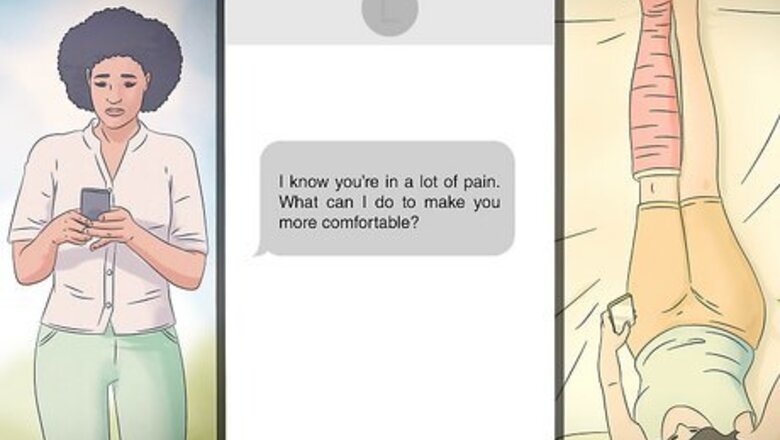
views
Check in on them.
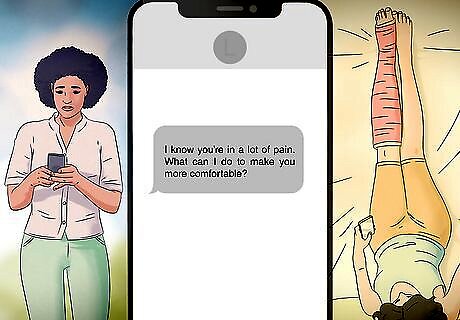
A simple “thinking about you!” text goes a long way. It lets them know you care about them and wish them well. When you check in, tell them they don’t have to respond—sometimes, people in pain feel stressed and obligated to keep others updated (and the last thing you want to do is add more stress). Try: “Hey there! Just thinking about you and hoping you’re not in too much pain.” “I’m thinking about you! No worries about answering, just wanted you to know ????” “No pressure to reply, but I just wanted to say I’m sending good vibes your way and wish you a speedy recovery!”
Ask how they’re feeling.
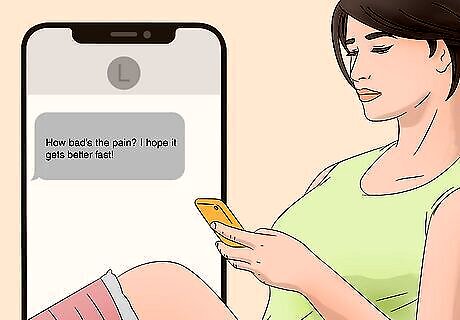
Sometimes, a person in pain just wants to be heard. Go ahead and ask them how they feel. It gives them the option to share if they want, or to change the subject. Vocalizing their pain can make them feel better and gives you a deeper understanding of what they’re going through and how it makes them feel. Try: “Hey! How are you feeling today?” “How bad’s the pain? I hope it gets better fast!” “Any improvement lately?”
Offer to help them out.
Someone in pain might feel like a burden when they ask for help. Take the pressure off them and offer your services. An open-ended “How can I help?” gives them a chance to tell you what they need. If they’re not sure, offer something specific and ask if that works for them. “I know you’re in a lot of pain. What can I do to make you more comfortable?” “I can pick up groceries for you so you don’t have to limp to the store. Would that help?” “I’d love to help however I can. What if I came over to clean up the house while you rest?”
Acknowledge their circumstances.
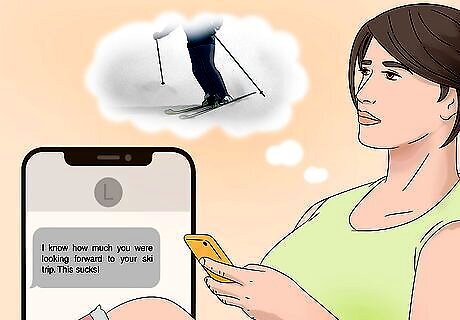
There’s never a good time to be laid up with an injury or pain. It can impact a lot of things in someone's life. Maybe the hurt person had to cancel a trip or hire a nanny because of their injury—these choices are hard, and talking about them shows you understand the gravity of their situation. Try sending: “I know how much you were looking forward to your ski trip. This sucks!” “A broken leg must be so much harder to handle when you have 3 dogs.” “I hope your migraine clears up soon. Your job sounds like enough of a headache on its own!”
Show you understand their feelings.

People experience a variety of emotional responses to their physical pain. It can make them angry, frustrated, depressed, or pessimistic. Empathize with their feelings so they feel understood and comforted. Even if you guess their feelings wrong, that gives them an opportunity to explain more. Try: “You must be feeling so frustrated about the accident.” “I know you’re absolutely miserable right now, I’m sorry this happened!” “I know you’re annoyed whenever your back acts up. Hopefully it’s not too bad this time.”
Validate their complaints and struggles.
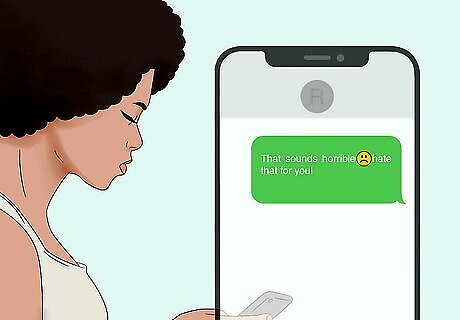
Sometimes, too much positivity can backfire. When someone’s hurt or going through a rough time, they might just need a place to vent without being told “it’s not so bad” or “look on the bright side!” Let them get their complaints off their chest and agree with them when they say “this sucks!” Reply with things like: “It really sucks you’re in so much pain, I’m so sorry.” “Wow, that really is 100% awful.” “That sounds horrible ☹️I hate that for you!”
Distract them.

A simple distraction does wonders for pain relief. If someone’s stuck at home with pain, get their mind off of it with exciting news, a new music video, or anything that’ll pique their interest. Just make sure they actually want to be distracted, and hear them out if they need support or to vent. “Did you see the new pictures from the James Webb Space Telescope?! They’re amazing!” “Omg you’ll never guess who I just ran into.” “You HAVE to listen to this podcast episode ASAP. Here’s the link.”
Tease them to get well soon.
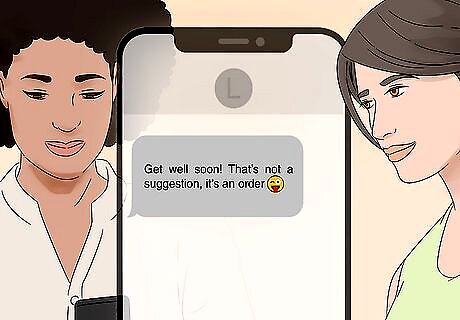
Make them smile with a joke about speeding up their recovery. A humorous command (like “You better be up and at ‘em soon!”) lets them know you want them to feel better ASAP. The humor lifts their spirits, plus the idea of getting together gives them something to look forward to! Text something like: “Get well soon! That’s not a suggestion, it’s an order ????” “Attention, this is your Captain speaking. All injured friends are required to recover immediately!” “I’m gonna need you in tip top shape by this weekend or else!”
Make them laugh.

Laughter is the best medicine, after all! Laughter can reduce stress, relieve pain, and lift your mood. Text an injured person memes, fun GIFs, hilarious TikToks, jokes, or ridiculous selfies to make them chuckle. They’ll appreciate you thinking of them and feel better after a good laugh. Tag them in funny posts you find on social media, too. Don’t be afraid of overdoing it—it’s endearing to someone who’s down in the dumps! Suggest hilarious shows or movies they can tune into while they’re stuck on the couch or unable to go out.
Tell them a relatable story.
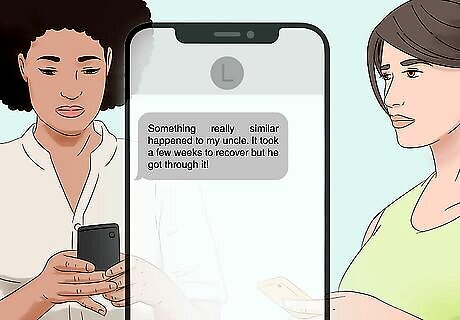
Stories are great ways to empathize without giving advice. Tell them about a time where you (or someone you know) had a similar injury or kind of pain. Your friend might pick up some useful tips and feel less alone in their pain. Keep it brief so you don’t steal the spotlight. Start your story like: “That reminds me of the time I broke my leg a few years ago.” “Something really similar happened to my uncle. It took a few weeks to recover but he got through it!” “Do you want to hear about what I did when I threw out my back?”
Let them know they’re handling it well.
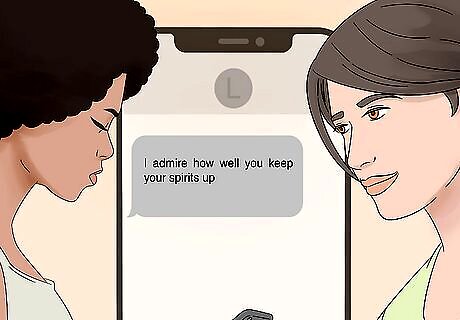
A compliment about someone in pain’s optimism or composure goes a long way. We can all relate to struggling with pain or an unexpected injury, so tell them you’re impressed with how they’re coping. It gives them something to feel good about while they recover. Say things like: “You seem so optimistic! I would be such a downer lol” “I admire how well you keep your spirits up.” “It’s honestly amazing how you can laugh through all this.”
Send them helpful resources.

A good read about their condition might give them some helpful tips. It also shows that you’re thinking about them and want to help! Text them a link to an article about pain management or a blog post by someone who has similar pain. Anything that validates what they’re going through or makes them feel less alone is a great option. Send articles or videos that offer advice on dealing with pain, support people with a specific injury or chronic condition, or highlight people who have overcome an injury or pain. Read or watch all the way through before you send to make sure it’s applicable to them.
Suggest a phone or video call.
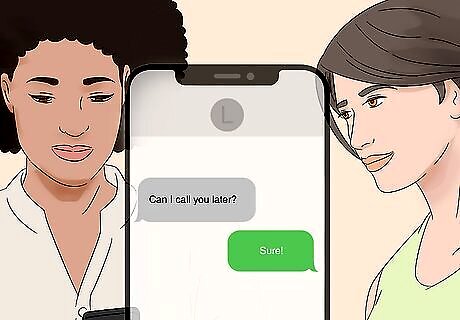
Calls are a personal way to get a better idea of what they’re going through. They’re also validating to the person in pain since calls show you’re willing to invest time in checking in on them. Text to see if their pain or injury prevents them from holding up a phone or sitting in front of a camera. “Can I call you later? I want to hear how you’re doing.” “Let’s FaceTime tonight! Does that work for you?” “Do you feel up for a phone call?”
Plan a virtual hangout.
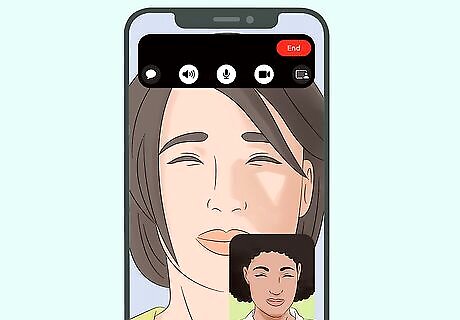
If you can’t comfort your friend in person, coordinate an online get together. Schedule a FaceTime or Zoom night to ensure they’re doing well from afar. You can even do workshops, classes, or other self-care activities. This is great for the person in pain since they can be at home in a position that alleviates their pain. Plan things like: Watching a TV show or movie together over a video call. A video game night. A virtual happy hour or meal together.
Be a safe space for them.
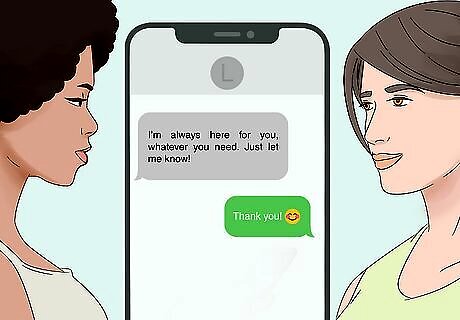
It’s important to let them know you’re here to support them while they’re laid up. Text them to say you’re available if they want advice or just someone to listen to their stories and empathize. Continuously gauge how you can best help them throughout their recovery. Send messages like: “I’m always here for you, whatever you need. Just let me know!” “If you want my advice, say the word! Otherwise you can always just vent to me.” “You can lean on me!”


















Comments
0 comment